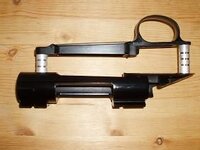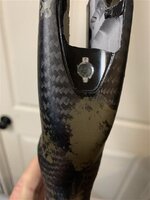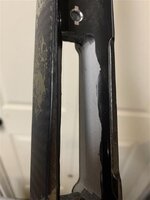My point is still true. The modulus of steel is double that of any commonly used stock composite material or wood. How much is that stock deflecting in order to load the receiver enough to deflect?It isn't floating on the pillar, the bottom of the wedge/recoil lug is seated fully against the pillar.
If you know someone who was a 700adl, gradually tighten the front trigger guard screw and cycle the bolt. It is very easy to lock that configuration up. When there's unsupported load, the only thing that can cause a torque wrench to not click while being turned, and then click at the preset, is the tension of the material bending to that load. That means there's stress in action.
Jeremy



